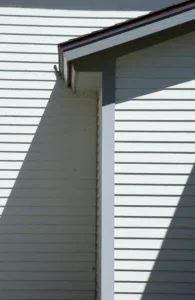If you are looking to enhance the performance, curb appeal and value of your home, one of the best home improvement projects to take on may be new siding. The siding on your home does not only provide unique character and charm, but it is also there to protect the interior structure of the home from the elements. Siding protects the inside of a home from rain, humidity and moisture, high and low temperatures, insects and pests. For this very reason, properly maintaining the siding of your home is very important. In fact, next to its roof, your home’s siding is the most important feature.
There are a variety of different siding materials on the market today, so when it comes to the cost of new siding, it can vary. There are various materials, styles and installation types and each one has its own maintenance and durability. In this article, we will be discussing the different types of siding, its advantages and disadvantages, and how much you can expect to pay for new siding.
The Different Types of Siding
There are countless different types of siding you can choose from. We have outlined some of the most popular below, as well as their advantages and disadvantages.
Vinyl Siding
Vinyl siding is one of the most popular choices when it comes to siding. In fact, vinyl siding has been around since the mid-1900s and was created to combat the down-sides of wood and stone siding. It has a range of advantages, including: cost-effective; comes in a variety of colors and styles; some vinyl sidings come with a lifetime warranty; easy to clean with just soap and water; and it is not susceptible to insect damage or rot.
However, it does have disadvantages too, such as: while it is relatively cheaper than other materials to buy, it can be pricey to repair; can be flammable; and it cannot be painted over once installed.
Wood Siding
Wood siding is another popular siding choice. Just as its name suggests, it is made from natural wooden planks attached to the sides of the home. It has a range of advantages, including: extremely eco-friendly because it is made entirely out of a natural material; easier to install; and it can be painted or stained to whatever color you like.
There are some disadvantages however, including: it is one of the most expensive siding materials; does not offer very good insulation on it’s own; it is highly susceptible to damage from insects, moisture, humidity and can rot over time; and it requires the commitment of maintenance and upkeep.
Cement Fiber Siding
Cement fiber siding is a highly durable siding made of sand, cement and wood fibers. It can be thicker than regular vinyl and can be shaped into a variety of textures and styles, such as wood grain. Cement fiber siding has advantages like: good energy efficiency due to thickness of material; can be manufactured into a variety of textures and colors; resistant to water and insects; and it is non-flammable.
Cement fiber siding also has disadvantages such as: it is usually more expensive than vinyl siding, but it is also less expensive than wood siding; can be difficult to install due to its weight, so installation charges can be higher than other materials; and cement fiber siding may require repainting every 15-20 years.
Foam Backed Vinyl Siding
Foam backed vinyl siding is a newer siding material that has a foam core backing which can be bonded or not bonded to the actual siding. Foam backed siding is a popular choice because its foam core offers an insulation barrier and prevents heat loss. Foam backed vinyl siding advantages include: excellent energy efficiency; can be easily cleaned with soap and water; reduces noise from the outside; can be installed in many different design choices and colors; and it is not susceptible to damage from moisture and insects.
However, it’s disadvantages include: it costs more than vinyl siding, it can be costly to repair, and you cannot change the color once it has been installed.
How Much Does New
The national average range for installing siding is between $7,500 to $22,500, with most homeowners spending around $13,500 for 1,500 sq.ft. of cedar siding in a Dutch lap installation, according to Fixr.com. The lowest price you can expect to pay for new siding is $4,500 for 1,500 sq.ft. of hollow vinyl siding installed. However, prices can also be as high as $60,000 for 1,500 sq.ft. of solid stone siding professionally installed.
You may have additional costs for house wrap, lath, furring strips, insulation, and repairs, depending on the siding. These can have additional costs of $0.50 to $2 a square foot. Other costs to consider when installing new siding include: light-blocks, dryer vents, freize board, facia board, rake board, bib house and more. Your siding home improvement contract will be able to ascertain the individual needs of your siding project.
{{cta(‘c2473634-2347-48b2-a01d-b65b501f4383′,’justifycenter’)}}



